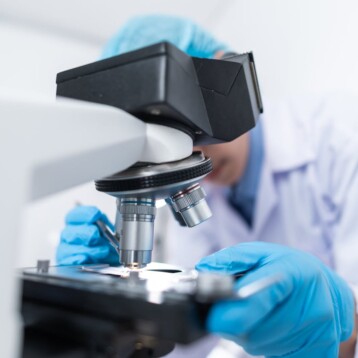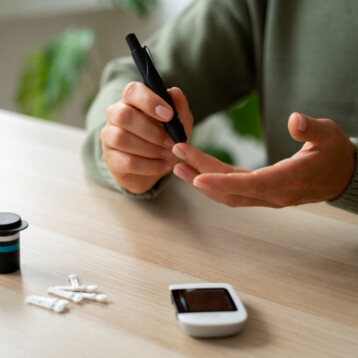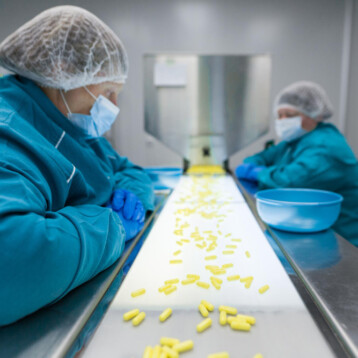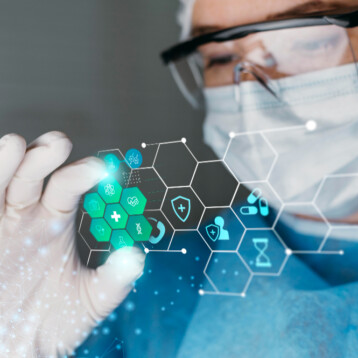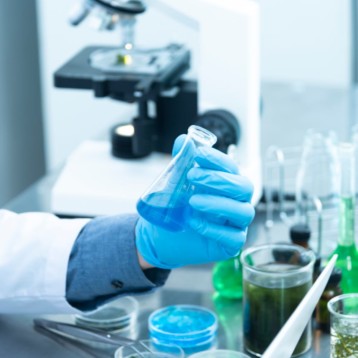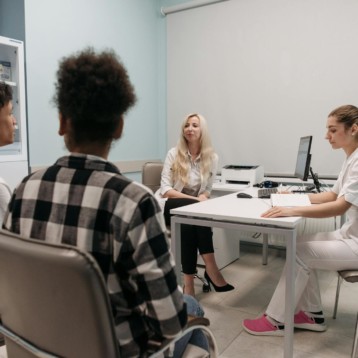|
new cell phone-sized blood analysis device is being developed for NASA’s National Space Biomedical Research Institute (NSBRI) by Professor Yu-Chong Tai and his team from Caltech. In the making since April 2004, the miniature blood analysis device has been developed ever since by about a dozen researchers working to transform the crude apparatus into a functional, space-capable technology. The chip-based device will perform a simple blood test in about two minutes. Apart from countingred and white blood cells(RBCs and WBCs), the team believes the new technology has great potential as a tool for analyzing fluids such as blood plasma and urine and even as a tool for cancer detection and DNA analysis.
Since present-day blood counting machines are large, complicated, costly, and usually require a large amount of blood as well as a trained technician to operate them, their use in space is precluded. Instead, NASA’s astronauts collect blood samples in orbit for subsequent analysis back on Earth. NASA is anxious to develop small and simple blood testing equipment that could be used for long space flights, such as the planned missions to the moon and Mars, for rapid evaluation of astronauts’ medical conditions. Likewise, the researchers foresee potential of employment of the device in neonatal units where drawing of large volumes of blood is precluded.
|
|
The device built by Professor Tai uses micro-sized valves, pumps, and flow chambers that operate and fit together in what is described as a lab-on-a-chip. The device requires only a single drop of blood to give a reading rather than two full 10 ml syringes required by conventional blood counting machines. The blood sample in Professor Tai’s device undergoes several processing steps. First, the sample is pulled into a mixing chamber where anti-coagulation chemicals are added. The solution is then diluted two or three-fold and the diluted sample then enters a cell separator, which separates molecules based upon size. Since WBCs are larger, they are separated from the smaller RBCs. The counting mechanism of the final stage is based on a unique micro-Coulter counter that calculates the number of WBCs and RBCs independently.
Lab-on-a-Chip interview
To learn more about the new lab-on-a-chip, TFOT interviewed Siyang Zheng, a researcher who has been working with Professor Tai on the project.
Q: How do you collect the blood for the new device?
A: For now, we plan to use a capillary tube to take a very small amount of blood from a finger tip. We are also interested in developing some micro needles in the future.
|
Q: What sort of tests can the system perform at this stage and what about future tests? What are the current limitations of the technology?
A: By the end of the project (April 2008), we would like to include a three-part differential of WBCs (granulocytes, lymphocytes, and monocytes), hematocrit, and RBC MCV (mean cell volume). We are not sure if we could do a five-part differential of WBCs. We might need to develop other technologies to perform that. Also we are not considering a platelet count with the current devices; it’s possible to add it on in the future. We believe all the blood count parameters that are provided by the current large size automatic blood counter can be measured by micro devices.
Q: How accurate is the new system?
Q: What is the current stage of the lab-on-a-chip development and what will be the first real world applications of the technology?
A: We have demonstrated the possibility of the device and it is at the beginning of the product development stage. This is a NASA project; we hope the first test in space can be in the next five years.
Q: Do you believe it will be possible to further reduce the size of the system so that people will be able to wear it, for instance like a watch, that will automatically perform a series of tests at specific time periods to monitor the a person’s health status?
A: Yes. I believe and I hope that will happen within the next ten years.
|
Q: Will the new system be able to perform other tests in the future, such as DNA, AIDS, paternity, cancer tests, etc.?
Q: Besides NASA, have you contacted medical equipment companies to develop the technology for the commercial market?
A: Actually, Iris Diagnostics, a division of IRIS International, Inc., is a co-investor in the project. They are interested in developing the device for a product. I would guess that the first main application will be in the emergency room.
Q: Could you estimate the price of the system when it will become available?






